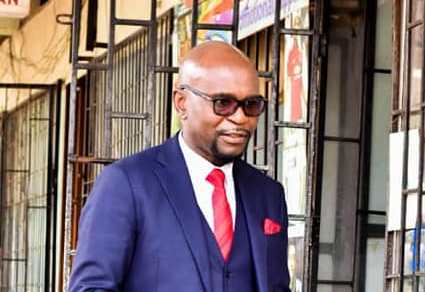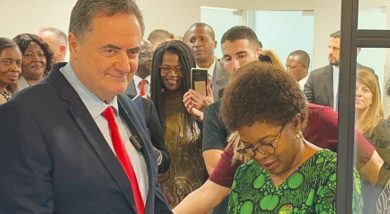Bingu: the man whose death left more questions
The major news of 2012 was the death of Bingu wa Mutharika, the third President of Malawi, who died in April. Although it is widely believed that Mutharika died on the morning of Thursday April 5, government only confirmed the death on Saturday, a day after doctors announced the death.
The delay in announcing the death and allowing the then vice-president Joyce Banda to step in, led to strong speculation that politicians, especially from the then ruling Democratic Progressive Party (DPP) were contemplating preventing lawful succession.
To date, it is not clear on which date Mutharika died, but many believe he died on Thursday, April 5, moments before he was taken to hospital in Lilongwe.
Close relatives and Cabinet members are believed to have withheld the information from the public and instead, hurriedly hired an air ambulance to carry the clinically dead president to South Africa for ‘treatment’, to buy time with their plot to by-pass Joyce Banda and install Arthur Peter Mutharika as the president.
This was despite that the Malawian Constitution clearly states that in the event of the President’s death or being incapacitated, the Vice-President should automatically take over.
It was further alleged that the air ambulance was delayed for a few hours as the pilot realised that he had to airlift the ‘sick’ President as ‘cargo’. Hence he had to obtain special clearance from both the South African Government and the International Air Travellers Association (Iata).
However, after almost two days of suspense, secret meetings, underground power-brokering as well as following local and international pressure, Joyce Banda was sworn in as the first female President of Malawi and the second woman president on the African continent after Liberia’s Ellen Johnson-Sirleaf.
Eight months after that fateful day and despite President Banda appointing a commission of inquiry on May 31 2012, about two months after being sworn in, it seems Malawians are yet to grasp the events leading to Mutharika’s death.
It all started as a mere rumour on the morning of April 5 that someone important was rushed to Kamuzu Central Hospital (KCH) in Lilongwe. This was after a heavy security presence at the hospital which was punctuated by the usual State House security detail.
The tip-off the newsroom got did not give details although unconfirmed reports started indicating that it was actually Mutharika who had collapsed at his Kamuzu Palace (formerly New State House) residence while meeting some top DPP officials.
The Nation team arrived at the hospital at 11.45am and found the President’s brother, Professor Mutharika, conferring with Chief Secretary to the President Bright Msaka. Director of National Intelligence Services Bintony Kutsaira was also among the first arrivals at the hospital.
Minutes later, the then Inspector General of Police Peter Mukhito arrived in a private car, followed by the then minister of Energy and Mining Goodall Gondwe and later, the then Health minister Dr. Jean Kalirani. The former First Lady Callista arrived at the hospital around 1.45pm.
The Office of the President and Cabinet (OPC) also maintained a tight lid on the matter.
Meanwhile, a top level Cabinet and government officials’ meeting was said to be taking place at the residences of one of the ministers in Lilongwe.
Sources close to the meeting said the agenda was to chart the way forward on the President’s condition.
It was only the BBC online which later carried a detailed story that Mutharika was admitted to the hospital’s ICU after suffering a cardiac arrest.
Later, Nation Online carried a story quoting an unnamed Cabinet minister, confirming that the Malawi leader was in a coma following a cardiac arrest. It also revealed that preparations were underway to fly Mutharika to a South African hospital, the same Thursday.
Meanwhile, speculation was rife that Bingu was dead.
Later, some media online outlets, including the BBC, also started carrying unconfirmed reports that Mutharika had died.
News also filtered in that the Malawi Defence Force (MDF) had deployed at least 15 officers at Banda’s Area 12 residence in Lilongwe, a move many interpreted as beefing up the security of a likely leader of the country.
At around 6.10pm, an official government statement said: “The President fell ill around 11am today and will be taken to South Africa for special treatment”.
Meanwhile, the KCH drama shifted to Kamuzu International Airport (KIA) which was being cleared for Mutharika’s departure.
Airport authorities ordered all staff to go home, clearing the way for Mutharika’s evacuation to South Africa. The drama led to some of the local media camping at the airport.
The unusually quiet airport had two planes, a military Dornier and an air ambulance from South Africa that was said to have landed around 7.10pm, minutes before two high speeding 4×4 vehicles cruised to the VIP lounge at the airport. Minutes later, the vehicles left the lounge and a ministerial Mercedes Benz MG 270M arrived.
The vehicles later sped off back towards the city of Lilongwe. Assumptions were that the vehicles carried South African doctors who might have gone to KCH to collect the ailing President.
Towards midnight, a convoy of five vehicles drove to the cargo terminal. At around 11.30pm, Mutharika or his body left KIA for South Africa straight to One Military Hospital in Pretoria instead of Milpark Hospital.
The morning of Friday April 6 2012 was uneventful as Malawians were trying to come to terms with the events of the previous day.
As government kept silent on the issue, it was former president Bakili Muluzi who first came out to condemn the silence at 10am, also calling for Banda to assume leadership of the country “in regards to the uncertainty surrounding President Mutharika’s health and condition.”
The same day at around 10.30am, local online media and radios started reporting Mutharika’s death.
Later in the afternoon, Vice-President Banda addressed the media from her Area 12 residence and said constitutional order would be adhered to and called on the Cabinet to come in the open on the President’s health.
However, as pressure mounted, government, through what has come to be known as the Mid Night Six comprising then minister of Information Patricia Kaliati, minister of Health Kalirani, minister of Local Government Henry Mussa, deputy minister of Foreign Affairs Kondwani Nankhumwa, minister of Sports Symon Vuwa Kaunda and deputy minister in the OPC Nicholas Dausi, called for a news conference at around 9.10pm the same Friday April 6.
Kaliati, who categorically ‘informed’ the media that she had just spoken to the President and that he was okay, also said Banda could not act as president as she was no longer a member of the ruling DPP.
Saturday, April 7 was a particularly eventful day. At around 08.10am government, through a press statement from the Office of the President and Cabinet (OPC) finally announced that Mutharika was dead. It was further announced that Joyce Banda would convene a Cabinet meeting.
It was now clear that Banda, who had held onto her post of Vice-President despite falling out with Mutharika, would move in to take charge of the country.





